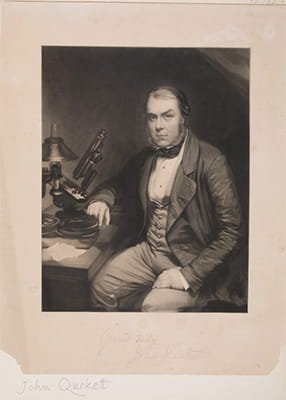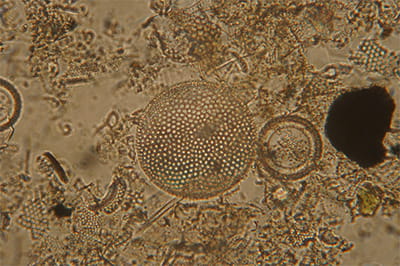A Very Large Collection of Very Small Things
25 Nov 2016
Hannah Cornish

Some of the finest microscope slides in our collection were produced by John Thomas Quekett (1815 -1861). Quekett was a pioneering histologist who built a collection of slides giving the most astonishing overview of the natural world on a microscopic scale, a natural history collection in miniature.
Professor Quekett collected samples of minerals, fossils, plants and animals and prepared slides of everything from microscopic diatoms (below) to part of the placenta of a giraffe (bottom), and over 12,000 of these slides survive today. Quekett received specimens from all over the world and corresponded with some very famous scientists and explorers. Alongside these remarkable slides the College also holds Quekett’s diaries, manuscripts and some of his equipment providing vital context for his work.
In 1848 Quekett wrote A Practical Treatise on the Use of the Microscope which became a classic text for microscopists, and is known to have instructed Prince Albert in the use of his silver microscope. Such was his influence that shortly after his death a group of scientists set up an association that still bears his name - The Quekett Microscopical Club. Not surprisingly the recent review of our collections concluded that the Quekett material is “one of the strongest representative collections of Victorian microscopy and scientific practice in general in the UK and possibly the world”.

These are just some of the reasons we are running a project to conserve, protect and digitise the Quekett microscope slide collection, generously supported by The Quekett Microscopical Club. In the years to come who knows what these specimens will be able to tell us about the natural world and the history of scientific study.
Hannah Cornish, Collections Assistant

